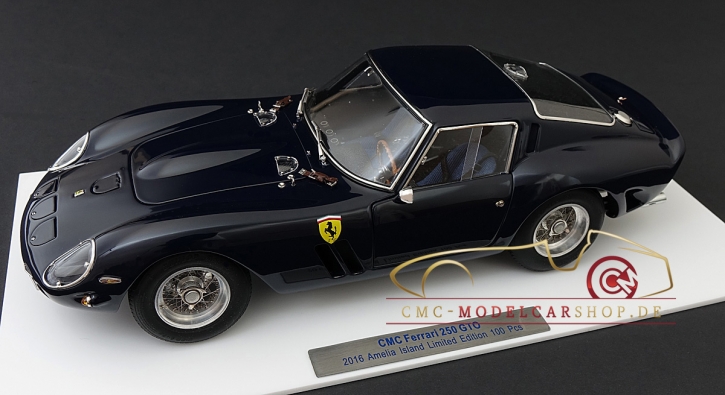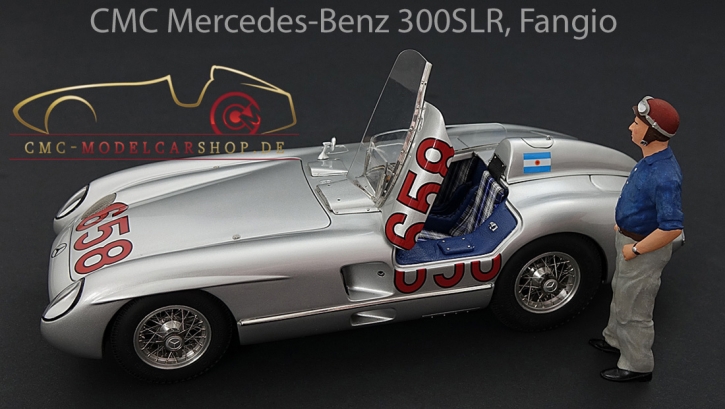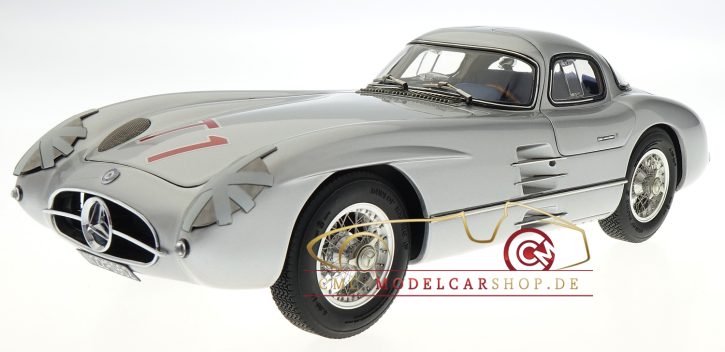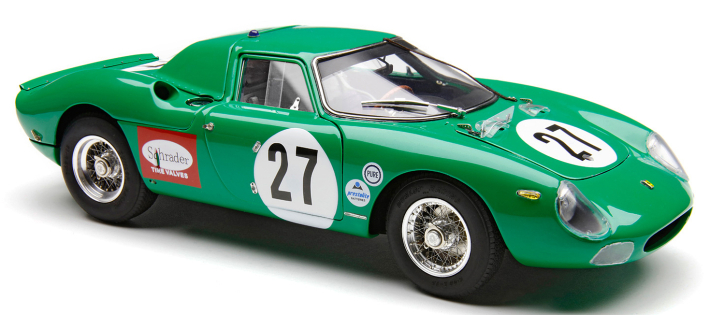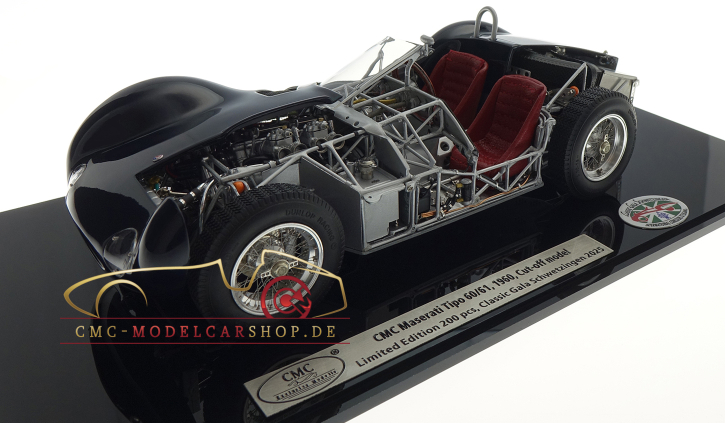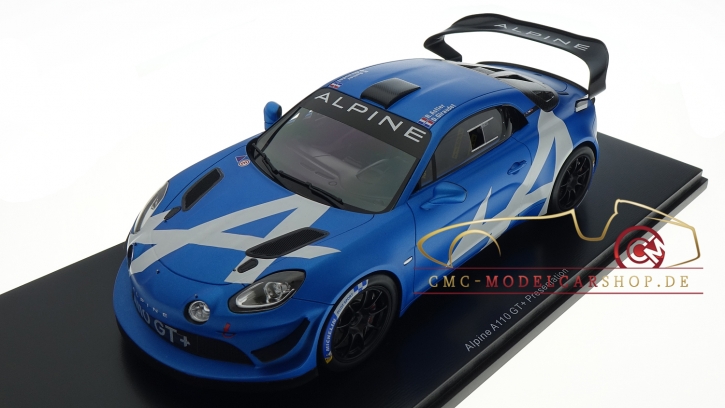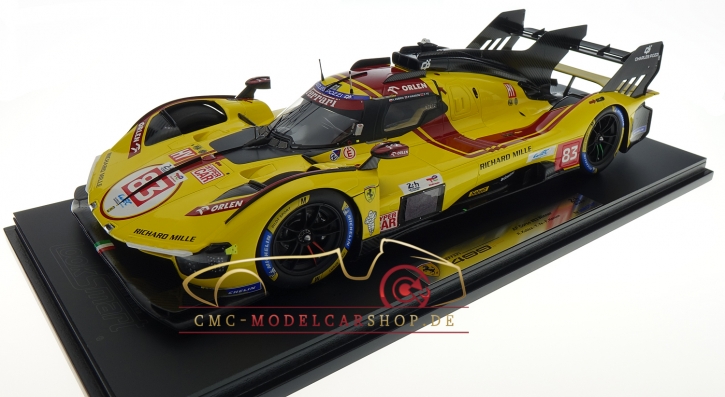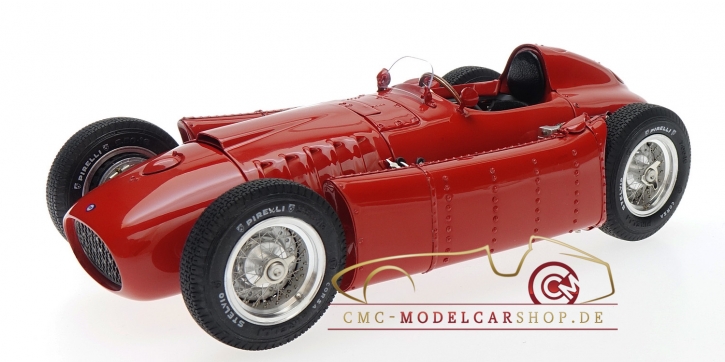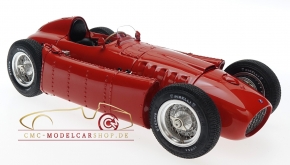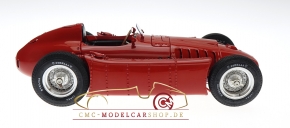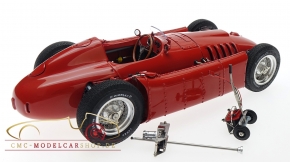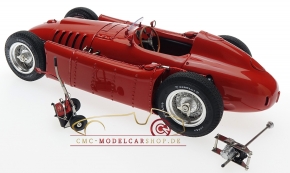539,00 EUR 572,00 EUR you save 5.8% (33,00 EUR)
incl. 19 % VAT excl. shipping costs
delivery time: 3-7 days within Germany
Product.Nr.: CMC M-175
product description
CMC plans to replicate the models of the original 1956 Lancia Ferrari D50 soon.
- Model: Precision model hand-assembled
- Manufacturer: CMC GmbH, Classic Model Cars, Germany
- Scale: 1:18
- Item-No.: M-175
- Color: red
- Driver: ---
- Parts: 1,598
- Limited Edition: ---
- Metal precision model hand-built from 1,598 parts
- Detachable and lockable engine hood
- Hinged adjustable screen
- Realistic replica of the V8 engine complete with pipes and cabling
- Metal exhaust pipes
- Triangular steering axle with shock absorbers, front suspension with wishbones, transverse leaf spring, all made of metal
- Rear suspension with De-Dion-tube, transverse leaf spring, longitudinal arms and inboard dampers, all made of metal
- Radiator grille hand-made of stainless steel with metal supports
- Highly-detailed replication of the cooling system
- Highly-detailed fuel and oil circulation
- Authentically-replicated hinged fuel caps
- Authentically-replicated hinged oil-filler cap
- Upholstered leather-covered driver seat and head rest
- Perfectly-crafted wheels with stainless-steel spokes and nipples on an alloy rim
- Authentically-replicated central locking nuts with right-/left-handed threads
- Elegant finish with a brilliant paint in original color
By so doing, it was possible to shift the dive shaft to the left and make room for a significant lowering of the driver seat. This enabled the monoposto to have a low overall height for better aerodynamics. Another note-worthy characteristic is the integration of the engine into the structure of the tubular steel frame as a load-bearing stressed element. A more eye-catching feature is, of course, the pannier fuel tanks. Each positioned along the body between the front and rear wheels, the two slim tank cells provided additional aerodynamic advantages. With a total volume of 200 liter, they could sustain an entire race without making a single tank-stop. The idea was that the less a car had to stop for refills, the easier its handling would be. And a more even distribution of weight with pannier tanks should be a big advantage over cars with tail tanks.
Scuderia Lancia consisted of two big shots -- Alberto Ascari. the two-time GP World Champion in 1952 and 1953 and Luigi Villoresi. Later on, more outstanding race drivers joined the team. On October 24, 1954 the Lancia D50 debuted at the Spain GP in Barcelona. Ascari took pole position in both qualifying and fastest race lap, but he dropped out prematurely due to mechanic problems. Early in the 1955 season, Ascari won two Formula 1 races, which didn’t count towards the World Championship. At the Monaco GP, Ascari was in the leading position until he crashed into the harbor. The tragic death of Ascari that occurred in a private test drive at the Autodromo Nazionale Monza and the mounting financial trouble with an overblown budget led Lancia to sell to Ferrari its race division, including the D50 vehicles.The Ferrari engineers introduced an overhaul of the D50. The modified monopostos participated in GP races as "Lancia Ferrari D50" from 1956 onwards. Juan Manuel Fangio won his 4th World Championship on one of these cars.
- Monoposto built on a tubular frame with free-standing wheels
- 2.5-litre V8 engine as a stressed member of the chassis
- Two valves per cylinder controlled by two overhead camshafts
- Dry sump oil lubrication
- Mixture preparation with four Solex PII double carburettors
- Dual ignition (two plugs per cylinder)
- Five-speed manual gearbox installed behind the driver
- Bore x stroke: 73.6 x 73.1 mm
- Displacement: 2,488 cc
- Maximum output: 260 HP at 8,000 rpm
- Top speed: 300 Km/h (depending on ratio)
- Wheelbase: 2,280 mm
- Track front/rear: 1,294 / 1,330 mm
- Total length: 3,570 mm
- Total width: 1,600 mm
- Total height: 1,001 mm
- Curb weight: 620 kg
Product safety - Manufacturer information (GPSR)
CMC GmbH & Co. KG, Stuttgarter Str. 106, 70736 Fellbach
Contact: www.cmc-modelcars.de
Sicherheitshinweis / Consigne sécurité / Safety warning:
Sammlermodell - Nicht für Kinder unter 14 Jahren geeignet
Modèle de collection - Ne convient pas aux enfants de moins de 14 ans.
Collector's model - Not suitable for children under 14 years of age
Review(s)












